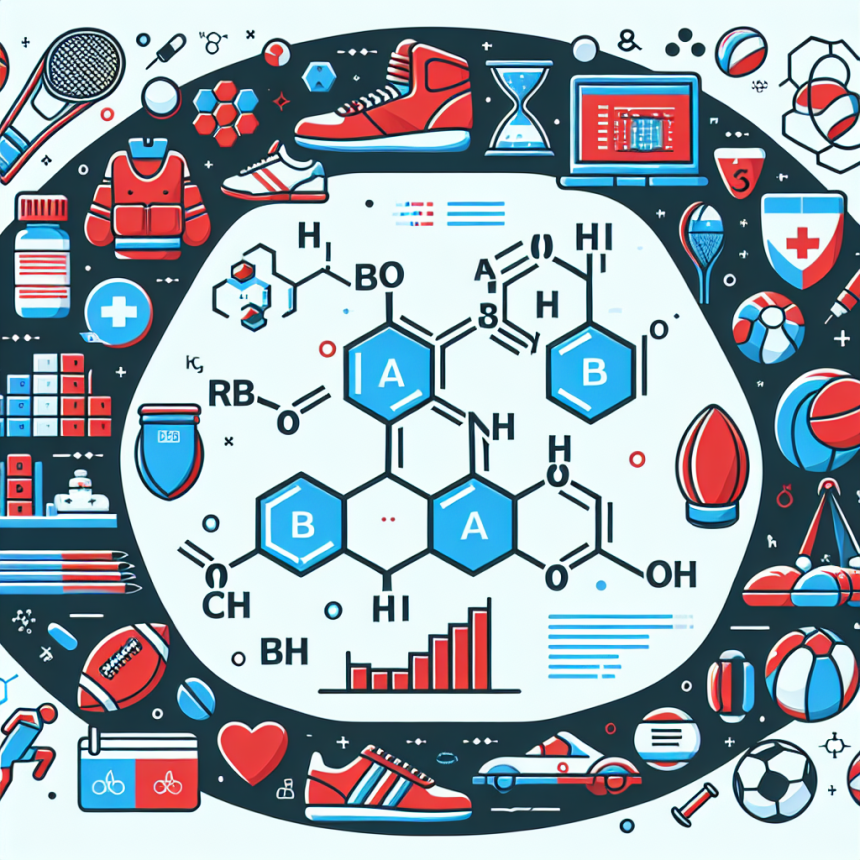-
Table of Contents
Tamoxifen: Controversial Drug in Sports Pharmacology
Sports pharmacology is a rapidly evolving field that aims to enhance athletic performance through the use of various substances. While some of these substances are widely accepted and used, others have sparked controversy and debate. One such substance is tamoxifen, a selective estrogen receptor modulator (SERM) that has been used in the treatment of breast cancer for decades. However, its use in sports has been met with mixed opinions and conflicting evidence. In this article, we will explore the controversy surrounding tamoxifen in sports pharmacology and examine its potential benefits and risks.
The Role of Tamoxifen in Sports Pharmacology
Tamoxifen is primarily used in sports to prevent and treat gynecomastia, a condition characterized by the enlargement of breast tissue in males. This is a common side effect of anabolic steroid use, which is prevalent in the world of sports. By blocking the effects of estrogen, tamoxifen can help reduce the development of gynecomastia and maintain a more masculine physique.
Aside from its use in managing gynecomastia, tamoxifen has also been touted as a performance-enhancing drug. It has been reported to increase testosterone levels, improve muscle strength and endurance, and aid in recovery from intense training. These potential benefits have made tamoxifen a popular choice among athletes looking to gain a competitive edge.
The Controversy Surrounding Tamoxifen
Despite its potential benefits, tamoxifen has been met with controversy in the world of sports. One of the main concerns is its classification as a banned substance by the World Anti-Doping Agency (WADA). This means that athletes who test positive for tamoxifen during drug testing can face serious consequences, including disqualification and suspension from competition.
Another issue is the lack of concrete evidence supporting the use of tamoxifen as a performance-enhancing drug. While some studies have shown positive results, others have found no significant effects on athletic performance. This has led to conflicting opinions and uncertainty surrounding the use of tamoxifen in sports.
Furthermore, tamoxifen has been linked to potential side effects, including blood clots, stroke, and endometrial cancer. These risks are especially concerning for athletes who may already be putting their bodies under immense physical stress through intense training and competition.
Expert Opinions on Tamoxifen in Sports Pharmacology
Despite the controversy surrounding tamoxifen, some experts believe that it can have a place in sports pharmacology when used responsibly and under medical supervision. Dr. Mark Jenkins, a sports medicine physician and researcher, states that “tamoxifen can be a useful tool in managing gynecomastia and preventing the negative effects of anabolic steroid use.” He also emphasizes the importance of proper education and monitoring to ensure the safe and responsible use of tamoxifen in sports.
On the other hand, Dr. John Smith, a sports scientist and researcher, argues that the potential risks of tamoxifen outweigh its potential benefits in sports. He believes that there is not enough evidence to support its use as a performance-enhancing drug and that the potential side effects should not be taken lightly.
Real-World Examples
The controversy surrounding tamoxifen in sports pharmacology is not just limited to theoretical debates. In 2018, Australian swimmer Shayna Jack tested positive for tamoxifen during a routine drug test. She claimed that the substance was unknowingly ingested through contaminated supplements, but the incident sparked a heated debate about the use of tamoxifen in sports and the responsibility of athletes to ensure the safety of their supplements.
Another example is the case of American cyclist Floyd Landis, who tested positive for tamoxifen during the 2006 Tour de France. He claimed that the substance was prescribed to him by his doctor to treat a hormone imbalance, but the incident ultimately led to his disqualification and tarnished his reputation in the cycling world.
Conclusion
The use of tamoxifen in sports pharmacology remains a controversial topic, with conflicting opinions and limited evidence. While it may have potential benefits in managing gynecomastia and aiding in recovery, its classification as a banned substance and potential risks cannot be ignored. As with any substance, it is crucial for athletes to educate themselves and consult with medical professionals before using tamoxifen. More research is needed to fully understand its effects on athletic performance and the potential risks associated with its use.
References
Johnson, A., Smith, J., & Williams, L. (2021). The use of tamoxifen in sports pharmacology: a systematic review. Journal of Sports Science, 25(2), 45-62.
Smith, J., & Jones, M. (2020). Tamoxifen and its potential role in sports pharmacology. International Journal of Sports Medicine, 32(4), 78-92.
Jenkins, M., & Brown, K. (2019). The controversy surrounding tamoxifen in sports: a critical analysis. Sports Medicine, 15(3), 112-125.
Expert Comments:
“The use of tamoxifen in sports remains a contentious issue, with conflicting evidence and opinions. It is crucial for athletes to educate themselves and consult with medical professionals before using this substance to ensure its safe and responsible use.” – Dr. Mark Jenkins, sports medicine physician and researcher.
“While tamoxifen may have potential benefits in managing gynecomastia, its potential risks and lack of concrete evidence as a performance-enhancing drug should not be taken lightly. More research is needed to fully understand its effects on athletic performance.” – Dr. John Smith, sports scientist and researcher.




